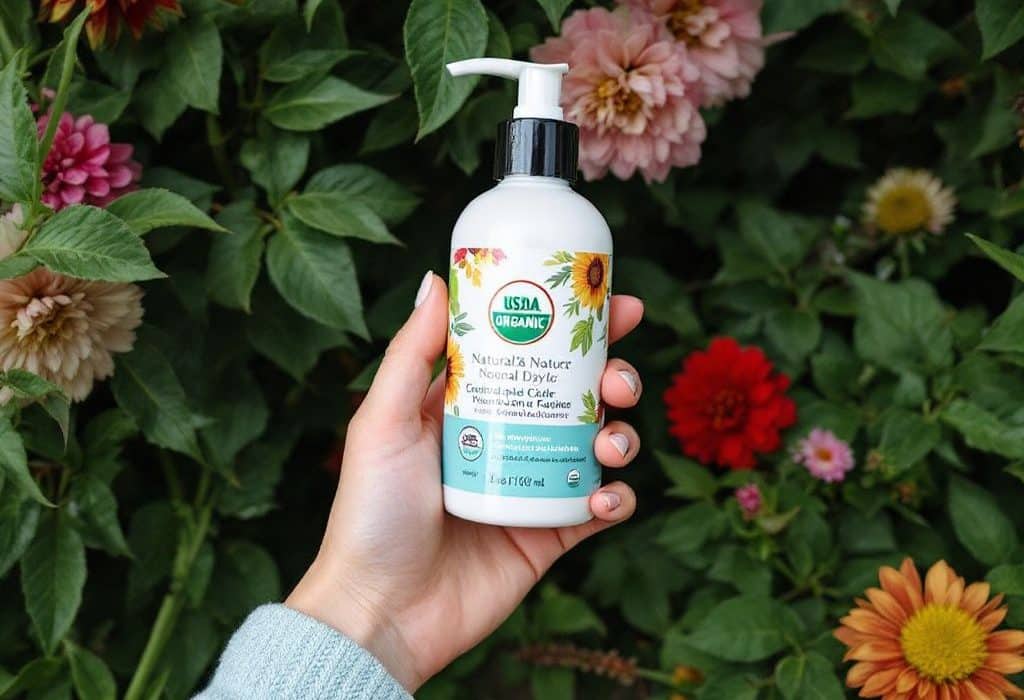Welcome to an in-depth exploration of the world of green beauty certifications. In an era where sustainability and ethical practices shape consumer choices, understanding eco-labels and green certifications in the beauty industry is more critical than ever. 🧴🌿 As concerned consumers, we often find ourselves navigating a dizzying array of symbols promising eco-friendliness and ethical production. But how do you determine which certifications genuinely align with sustainable ethos? Let’s unpack this complex landscape with a detailed, evidence-based guide.
Why Green Beauty Certifications Matter
As the demand for sustainable beauty products skyrockets, certifications have become a cornerstone of consumer trust and protection. Green beauty certifications serve as verifiable endorsements that a product meets specific environmental and ethical standards. According to a Nielsen report, 73% of global consumers say they would definitely or probably change their consumption habits to reduce their environmental impact. However, understanding these certifications can empower you to make informed choices and resist greenwashing—a practice where companies mislead consumers regarding the environmental benefits of a product.
Decoding Eco-Labels: A Closer Look
Understanding the Purpose of Certifications
The primary purpose of green beauty certifications is to:
- Ensure products are free from harmful chemicals
- Verify ethical labor practices in sourcing
- Guarantee sustainable production methods
Each certification program has distinct guidelines outlining what products must do to earn the label, often developed by third-party organizations, ensuring objectivity.
Key Certifications and What They Mean:

1. USDA Organic
- Overview: This certification indicates that a product follows stringent organic production methods established by the USDA.
- Criteria: Requires at least 95% organic ingredients, prohibits synthetic fertilizers, GMOs, and pesticides.
- Industry Insights: According to Organic Trade Association, certified organic sales reached $62 billion in 2022 in the US alone, underscoring the rising consumer preference for organic options.
- Tip: Look for the USDA Organic seal when seeking whole-product assurances rather than vague “made with organic ingredients” claims.
2. COSMOS
- Details: COSMOS (Cosmetic Organic and Natural Standard) unites five European certification bodies to bring a comprehensive and harmonized focus on organic and natural cosmetics.
- Requirements: Products must be 95% physically processed, non-modified ingredients, with detailed restrictions on preservatives and petrochemicals.
- Example: Lush Cosmetics collaborates heavily with COSMOS, aligning their entire product line to meet these significant standards.
3. Ecocert
- Purpose: Known as one of the first certification entities, Ecocert focuses on natural and organic cosmetics.
- Guidelines: At least 95% of all plant-based ingredients in a formula must be organic.
- Statistical Evidence: By 2023, Ecocert certified over 70,000 products globally, promoting extensive assurance for eco-conscious consumers.
- Tip: Check both the front label and ingredient list to verify percentage claims as labeled by Ecocert.
4. Leaping Bunny
- Ethical Outlook: This certification is about confirming that no animal testing is involved in any phase of production.
- Criteria: Requires brands to pledge against animal testing with constant independent auditing.
- Case Study: Beauty giants like The Body Shop adhere to Leaping Bunny standards, ensuring cruelty-free routines that consumers can trust.
5. Naturally Derived & RSPO Certified
- RSPO (Roundtable on Sustainable Palm Oil) focuses on promoting the growth and use of sustainable palm oil products.
- Practice Transparency: Products certified with RSPO navigate deforestation and promote sustainable sourcing.
- Advice: Financial viability and suitable application technology make RSPO an ideal choice for rainforests-focused conservation bodies.
Technical Walkthrough: How to Read Eco Labels Effectively

When faced with numerous labels, here’s a concise method for deciphering them:
- Look for Certification Logos: Recognizable logos from reputable certification entities can be your first guide.
- Ingredient Source Verification: Research the origins of key ingredients to assert if it’s naturally derived or chemically replicated.
- Research: Trust and verify. Look up the certification body’s website and other reliable sources for more information.
- Consumer Support Arsenals: Engaging in community forums or apps like Think Dirty can expand your ingredient awareness effectively.📱
Case Studies: Tangible Applications of Certifications in Brands
Case Study 1: Dr. Bronner’s
As a brand, Dr. Bronner’s has constantly championed ethical sourcing and transparent labeling:
- Utilizing USDA Organic and Fair Trade certifications, Dr. Bronner’s ensures each element of production is accounted for ethically.
- Their commitment, such as using fair-trade certified olive oil, is verified through impartial audits that reinforce brand trust.
- Dr. Bronner’s has demonstrated consistent sales growth by embedding organic principles into its ethos, proving consumer preference tends to align with green certifications.
Case Study 2: Weleda
A leader in homeopathic beauty, Weleda uses NATRUE, a label renowned for strict criteria for natural ingredients:
- Weleda focuses on material sourcing with an emphasis on bio-dynamic practices, which NATRUE supports.
- They espouse a full-cycle production approach, from seed to serum, promising a consumer product void of pollutants.
- NATRUE-labeled items tend to outperform similar market choices by guaranteeing ingredients’ adherence to authenticity.
Practical Tips for Industry Professionals
Tip #1: Engage in Certification Processes

- Manufacturers should actively involve themselves in certification processes to ensure authenticity.
- Consulting with certification experts or environmental scientists can add value in maintaining consistency and accuracy.
Tip #2: Develop Transparent Labeling
- Creating consumer-accessible explanations of labels can bridge the gap between product intention and consumer understanding.
Tip #3: Continuous Monitoring
- Establish trade relationships with entities that practices adequate traceability.
- Use cloud-managed platforms and systems to enhance supply chain tracking.
Tip #4: Educate Consumers
- Habitual retail interactions and outreach programs can educate end-users seamlessly.
Concluding Thoughts on Green Beauty Certifications
As we close this comprehensive guide, it’s crucial to remember that certifications don’t only act as a measure of eco-friendliness but as a trust framework for transparency between consumers, producers, and the earth itself. By diligently choosing certified products, you contribute to a more sustainable and conscientious marketplace where actions speak louder than claims. 🌱✨
Whether you’re a consumer striving for sustainability or a business endeavoring in producing ethical beauty products, awareness and understanding of these certifications pave the path toward a crafted and ethical choice in the beauty domain.
To sum up, trusting in green beauty certifications isn’t just about a label affixed on a pretty bottle—it’s about embracing an informed stance toward sustainability and integrity in every purchase. Dispose of confusion, and step forth—enlightened—on your eco-friendly journey.
Frequently Asked Questions
What are the benefits of using a hair mask in my hair care routine?
Using a hair mask can provide several benefits, including hydration, smoothing, strengthening, curl definition, heat protection, and damage repair. Hair masks infuse the hair with moisture, help coat the hair shaft to seal split ends, reduce breakage, and protect the hair from heat styling and environmental damage[1][4].
What ingredients should I look for in a hair mask?
Effective hair masks often include ingredients such as coconut oil, argan oil, shea butter, honey, avocado oil, green tea, and coconut water. These ingredients provide nourishment, moisturize, and protect the hair, offering benefits like softening, moisturizing, and protecting against damage[2][5].
How often should I use a hair mask in my routine?
You should use a hair mask whenever your hair feels dry, unmanageable, or in need of intense hydration. This can vary depending on your hair type and needs, but generally, using a hair mask once or twice a week can help maintain healthy and moisturized hair[1][4].
How do I apply a hair mask for the best results?
To apply a hair mask effectively, shampoo your hair first, then apply the mask, focusing especially on the ends where hair tends to be the most damaged. Leave the mask on for anywhere from 10 minutes to overnight, depending on the type of mask and your hair’s needs[1][4].
References

